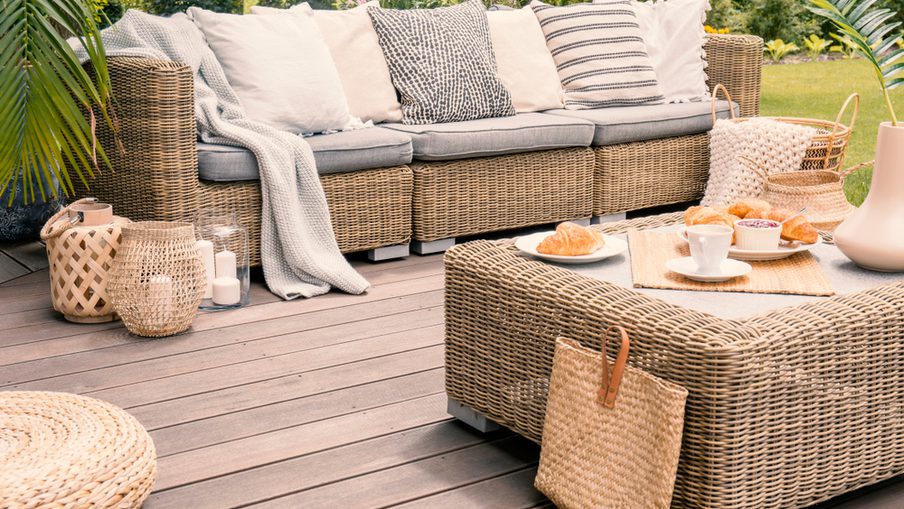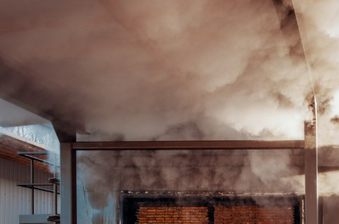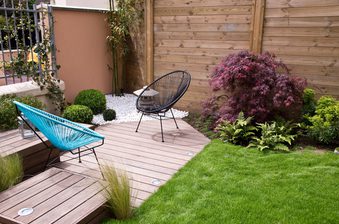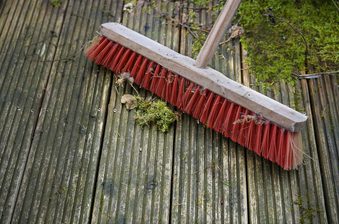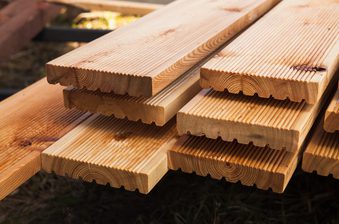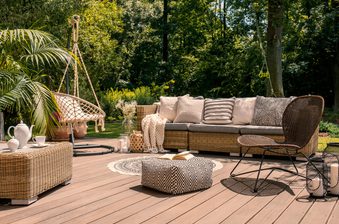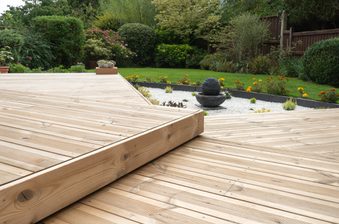Decking adds a beautiful touch and can enhance your garden in a variety of ways. Let’s talk through the best species, styles, costs, maintenance, as well as a few other helpful hints and tips.
Decking creates the ideal space for al fresco dining and socialising, adding value to your property. Elevated decking can be used to even out a sloping garden terrain.
Elegant, durable and surprisingly low maintenance, let’s talk through every stage of owning a beautiful deck, starting with the big one — the best wood to choose.
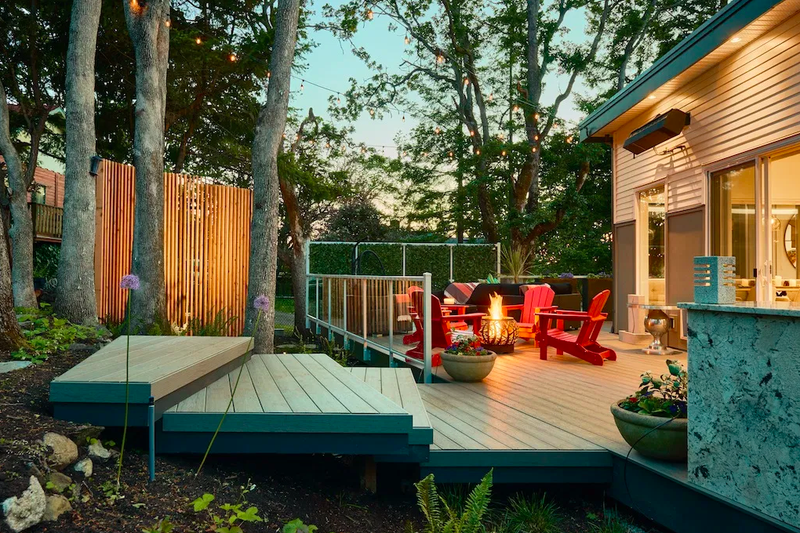
What is the best wood for decking?
The best types of timber for decking have to look the part — of course — but they also need to be suited to the outdoors and all the destructive natural elements encountered. We all know how unforgiving and unpredictable UK weather can be!
Fortunately, we are gifted with many beautiful hardwood species that are extremely strong and naturally resistant to rot, decay, moisture and UV — perfect for a high-impact outdoor area like a deck.
Below, we’ve listed five excellent, on-trend decking timbers. Take your pick!
1. Oak
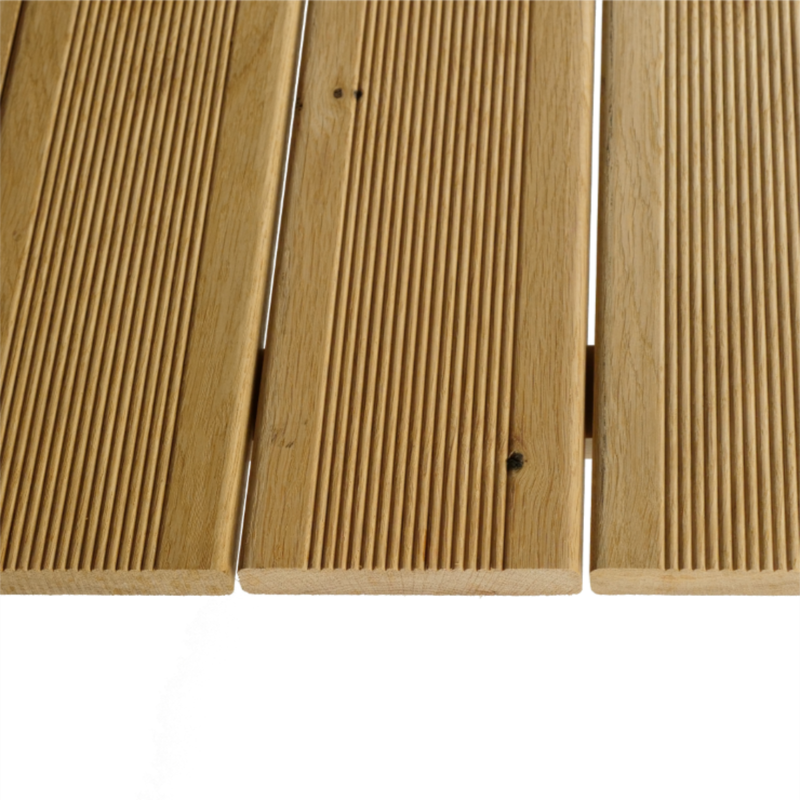
Timeless, beautiful, high performance — you simply can’t go wrong with oak.
Oak’s cheaper price belies its natural elegance; it is a perennially popular choice for very good reason. It’s never going out of style.
That’s not to mention its superb outdoor durability. European Oak is potentially the least expensive hardwood decking option available, but nevertheless an aesthetically-pleasing one.
The finished product, once oiled, is a fine, versatile medium-to-light brown colour; the finger joints in the timber will be visible.
It’s worth noting that European Oak can tend to move slightly more as compared to tropical hardwoods. Therefore, it’s worth putting a slightly larger gap in between the boards.
It usually comes in a fluted profile. With the boarding glued and finger-jointed, this species has the additional benefit of being able to be supplied in longer, more stable lengths.
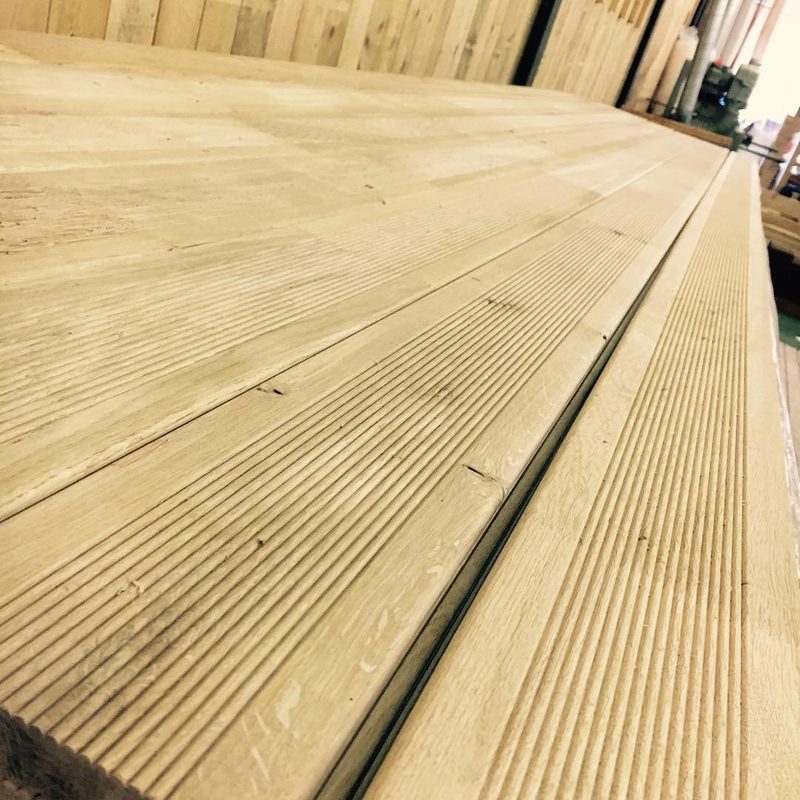
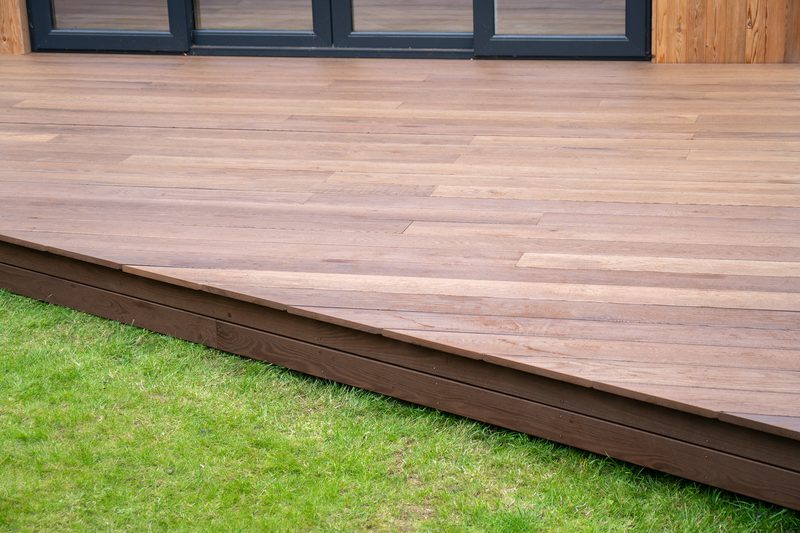
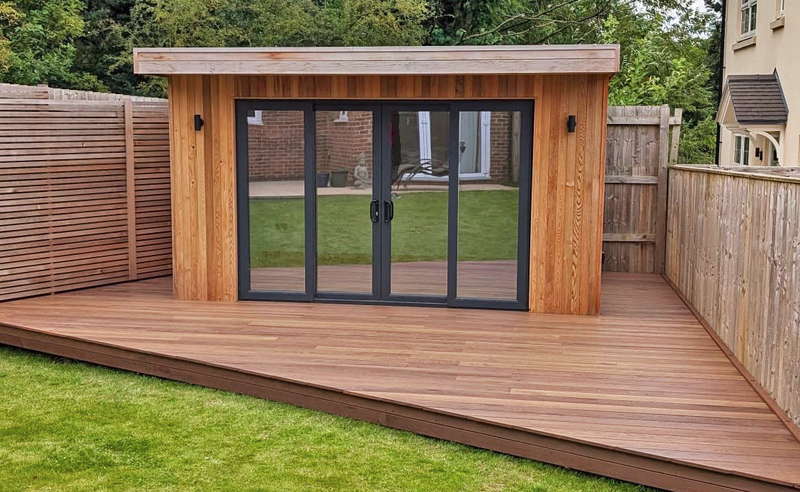
For those working to a tighter budget but still after a high-performance hardwood, European Oak represents an excellent choice.
- Ideal for: Those looking for a strong, elegant, cost-effective timber decking species at a potentially longer length.
- Price point: £40–55 per m² + VAT
2. Iroko
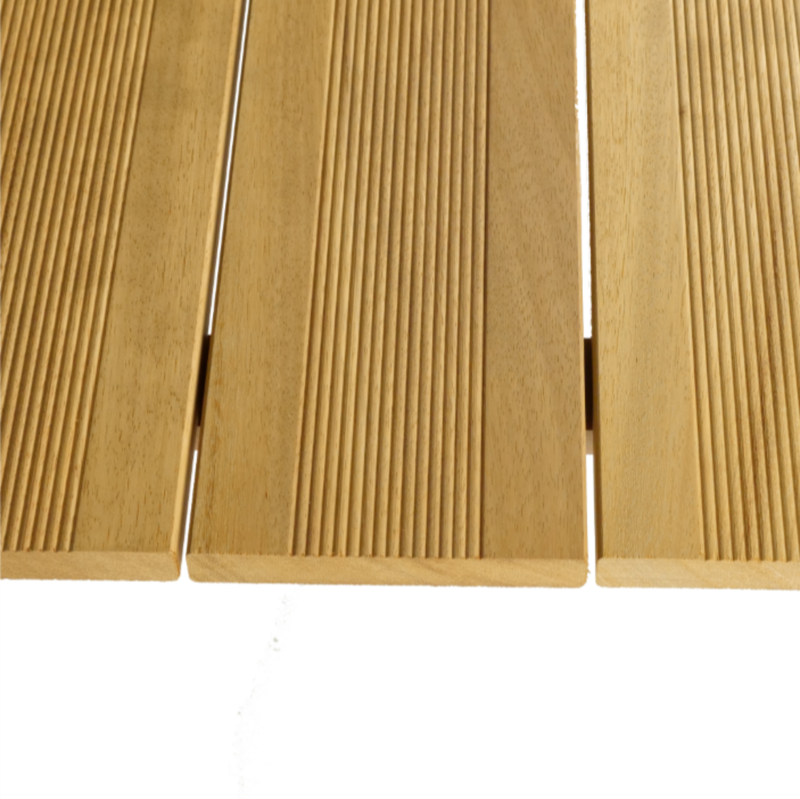
This is the first of two tropical hardwoods we’ll mention. Sourced from the coasts of Africa, Iroko has the nickname ‘African teak’, which tells you all you need to know about its beauty, durability and strength.
The alluring, warm golden browns of Iroko are celebrated for their luxurious tropical appeal. The timber has an interesting variance in colour which becomes less profound after being oiled.
Extremely slow growing, Iroko is very dense, hard and scratch resistant, as well as producing its own natural oils to guard against fungal damage, UV, moisture and rot. Exceptionally stable, it’s pretty much the Rolls-Royce of decking.
Iroko is a stunning, on-trend timber — the perfect way to add an architectural, design-led touch to your outdoor space.
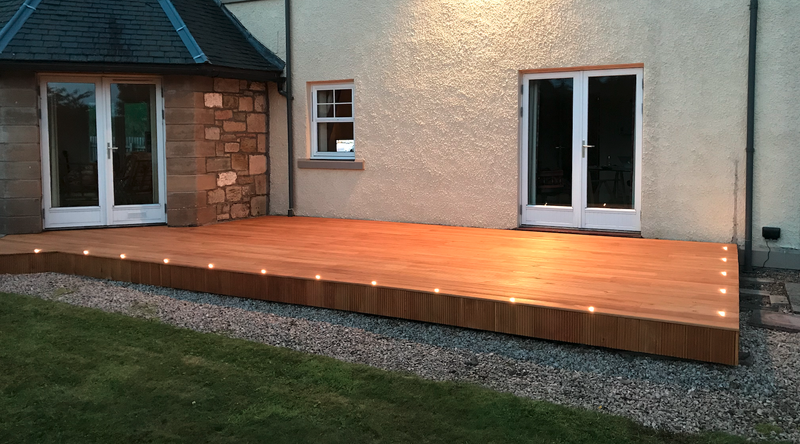
- Ideal for: Those in search of a beautiful, high-end timber species with exceptional technical properties.
- Price point: £55–60 per m² + VAT
3. Balau
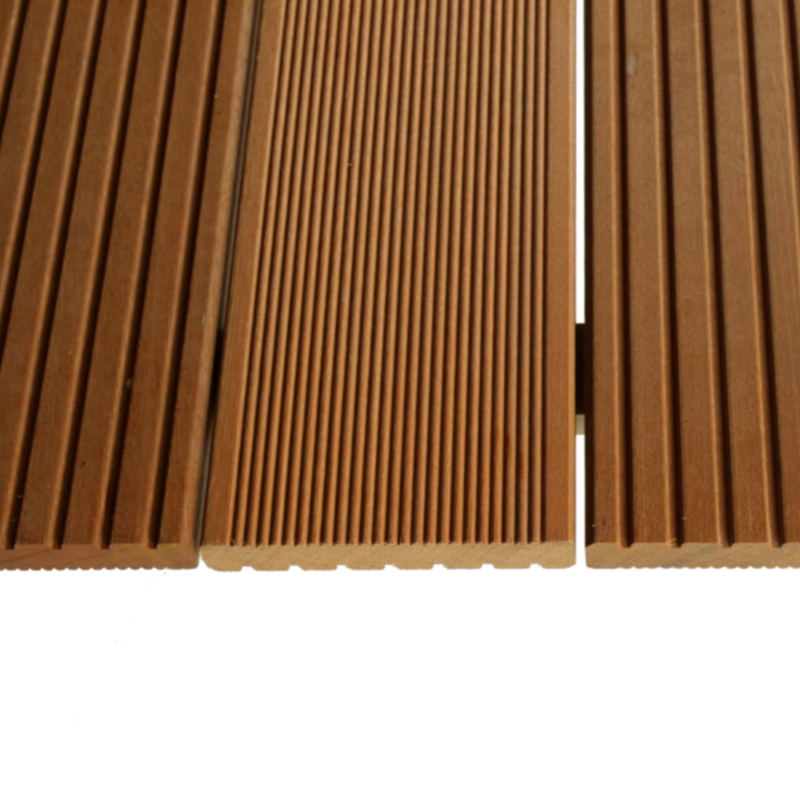
Much like Iroko, Balau oozes tropical class, as well as having exceptional technical performance.
Beautiful, strong, stable, durable, water resistant — when it comes to the best hardwood for a deck, Balau leaves no box unticked.
The main difference between Balau and Iroko is that Balau has a much more consistent reddish-brown colour — so your choice between one or the other will probably come down to the aesthetics.
With exceptional water resistance, Balau is the ideal pool-side decking choice.
- Ideal for: A higher-end timber with fantastic technical properties; decking areas requiring water resistance.
- Price point: £55–60 per m² + VAT
4. Thermowood
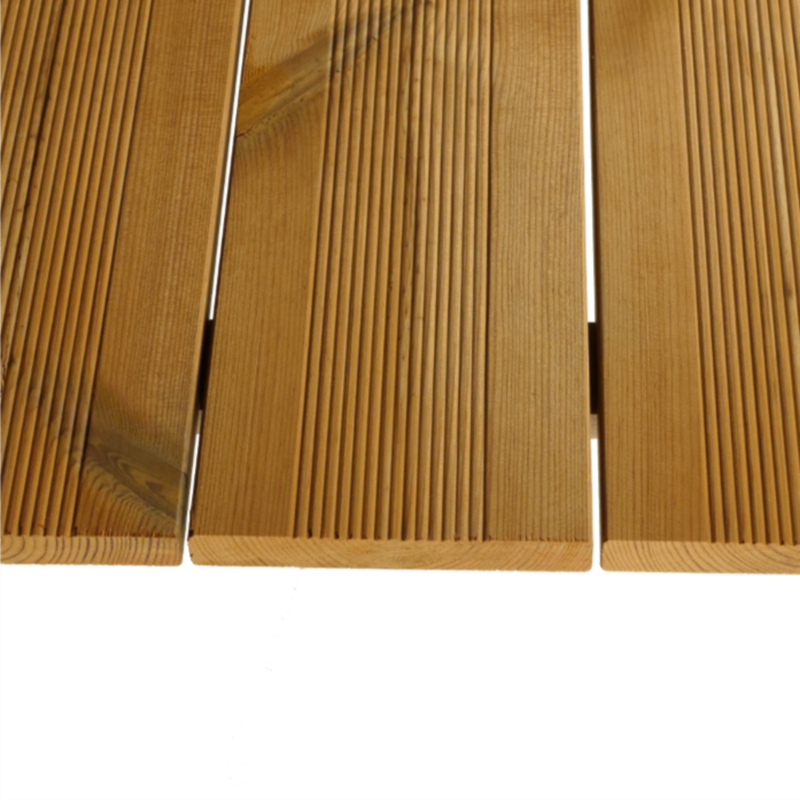
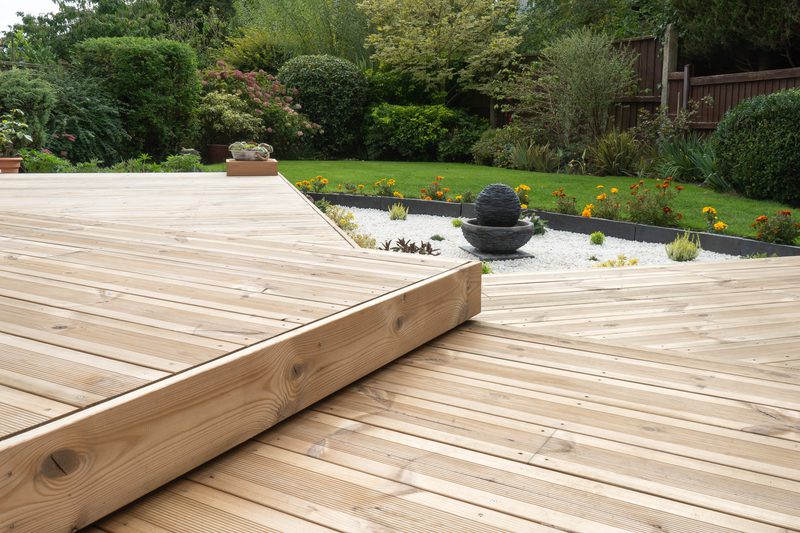
ThermoWood is a popular, quality modified softwood.
Starting its life as pine, it undergoes treatment to bolster its durability and strength, creating an attractive, high-performance choice for a decking project.
Thermowood is heat treated and does not move as much as Siberian Larch or European Oak. With a price point of £25–£30 per m² + VAT, it’s a particularly cost-effective solution.
It can be further treated with a deck oil to maintain the dark colour, or can be left to weather naturally.
- Ideal for: Those in search of a stable, durable, longer lengths and cost-effective timber decking species.
- Thermowood price point: £25–30 per m² + VAT
5. Siberian Larch
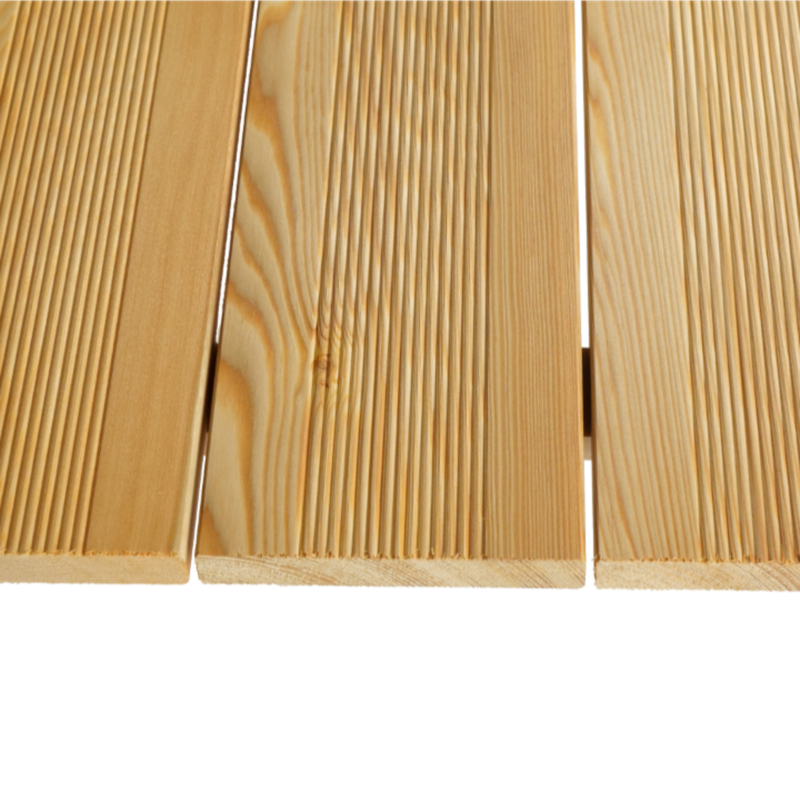
Don’t be put off by Siberian Larch’s official status as a softwood. In practice, it’s anything but.
This slow-growing, cold climate timber packs in a huge amount of density and strength — it’s even harder than some hardwoods, performing very much like one. Larch also boasts that all-important natural resistance to rot, moisture and fungal attack.
That’s without getting started on its beautiful pale colour and dynamic grain pattern.
Siberian Larch usually comes in at a lower price point than the hardwoods and modified timbers listed above — an excellent option for any deckers running a tighter budget.
It’s worth noting that the species does tend to move more than Thermowood and the other hardwood options, though.
As with the finger-jointed European Oak, longer lengths are available in this species.
- Ideal for: Those in search of a cost-effective, durable, longer length and rot-resistant species.
- Price point: £25–30 per m² + VAT
How much does decking cost?
The price of decking per m² depends on the species used and can be subject to change, but for ballpark figures…
- High-end: A tropical hardwood species like Iroko or Balau will usually set you back between £55–60 per m² + VAT.
- Mid-range: A beautiful, durable decking timber like European Oak will usually cost between £40–55 per m² + VAT.
- Cost-effective: Siberian Larch and Thermowood both represent excellent decking choices for those on more of a budget, costing between £25–£30 per m² + VAT.
A typical, average-sized domestic decking area is around 20m² — which gives an approximate cost in the region of £800–£1100 + VAT for a mid-range hardwood deck.
For a quality hardwood deck like this, expect at least 25 years of service with good upkeep.
The types of decks you see at DIY and home improvement stores in the UK are tanalised (pressure-treated) softwood, costing approximately £15 per m² + VAT. These are not always of good strength or durability, but can still represent a viable, very low-end budget option.

Designing your decking project
If you’re planning a special project, don’t miss our other blog post about decking design trends.
Once you’ve chosen a specie and profile, you’ll need to consider installation. Bear in mind that, if you’re not confident, there’s always the option to hire a professional.
However, for all those keen DIY-ers out there, it’s always possible to install your own — but don’t miss these handy tips…
Decking installation tips and tricks
- Ensure a 5mm gap between your decking boards (when using Oak or Larch, you may want to increase this to around 7mm as there will be more movement when using these species)
- Use protective precautions when installing your sub-frame
- Damp protection pads can be purchased to place between your subframe and the ground to stop any water being transferred from the ground and into your subframe.
- Decking tape can be used to cover the face of your sub frame, ensuring that your decking and sub-frame are not touching and transferring water between the two
- Ensure your decking is securely fastened to your sub frame. Use a high-quality, stainless steel decking screw when fixing your deck down
- If you use standard wood screw or a poor-quality decking screw, these will eventually break and will allow the boards to move and warp, resulting in your deck bulging up in certain areas
- Screws that are not stainless steel will also bleed and stain your timber a dark black brown colour
- Make sure air can circulate around your decking; this will help stop your sub-frame from becoming damp, moving and even rotting
- Use spacers in between your subframe and decking boards.
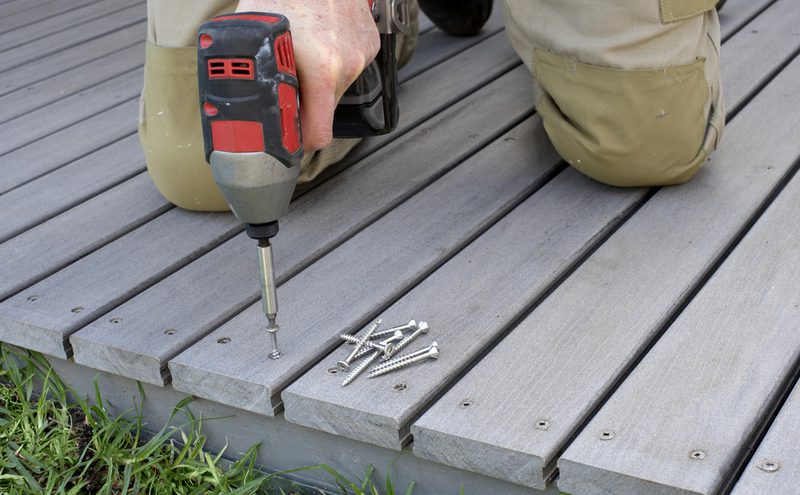
As well as the species, profile, design and installation, you’ll need to consider upkeep.
The good news? Decking is surprisingly low maintenance.
Timber garden decking: Protection, upkeep & maintenance
Firstly, you need to make a call about the long-term looks of your decking. ‘Weathered’, silvery-grey timber has become quite popular in recent years.
If, however, you’d like to maintain the original colour of the wood, make sure to finish your deck with a high-quality UV protection oil.
The sun is the biggest foe to your beautiful decking; a high-quality deck oil, similar to Owatrol Aquadecks, will give the construct extended weathering life, and guard against any weathering action.
How often does a wooden deck need treating?
We’d recommend that you give your decking a coating of deck oil annually — so try to dedicate a warm, dry afternoon once a year towards decking treatment.
With some particularly high-quality oils, an application once every two years may suffice. As an added benefit, some UV oils will sometimes also contain an added grip feature, making your decking safer for the family.
Before re-applying, make sure to give the deck a good brush and a gentle clean with some warm, soapy water.
How long does a timber deck last for?
If high-quality timber is used, it is well maintained and the design is well-constructed, a deck can last for well up to 25-30 years.

Let’s level-up your outdoor space
We’re proud to be a leading UK supplier of quality decking, whether you’re a DIYer, architect, designer or tradesperson.
Explore our wide range of beautiful, durable timber decking, available in a number of eye-catching species and profiles. Whatever your project requirements — anti-slip strips, UV coatings — we’re here to help take your garden to the next level with a stunning decking solution.
Get in touch
